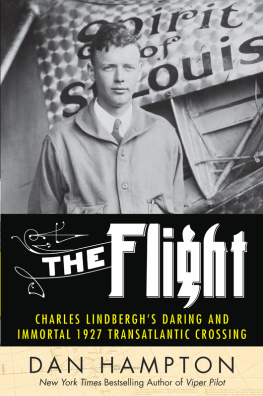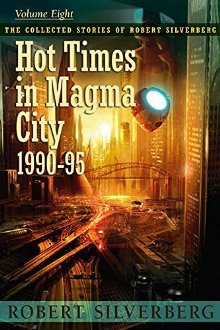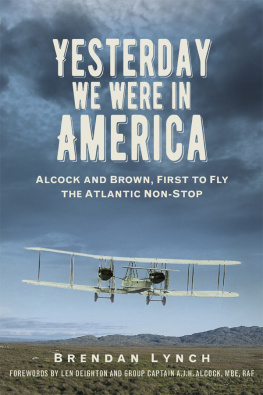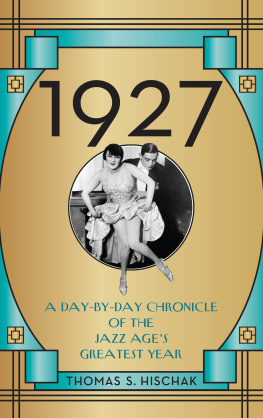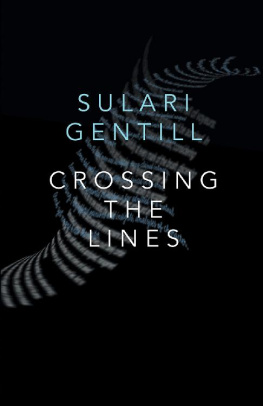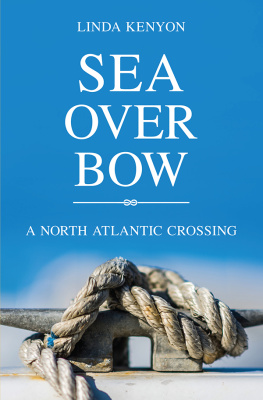IN 2015 PETER HUBBARD , my talented, tireless editor at HarperCollins, suggested this book. No one, he said, has written about Lindberghs flight from the cockpit. It would take a pilot to do that, I replied without thinking, and walked directly into his trap.
Peters enthusiasm was infectious. I realized, as I usually do with my books, how much I was not taught about such an event, or in this case about the man himself. In creating The Flight, I have been privileged to have had a great deal of valuable professional assistance. Ric Gillespie, executive director of The International Group for Historic Aircraft Recovery (TIGHAR), made the prologue possible. His exhaustive compilation of reports and personal experiences concerning the disappearance of the White Bird are unparalleled.
Charles Lindbergh was a meticulous note taker, journalist, and record keeper. Over the span of his life, he would routinely take suitcases of his papers to the Yale University Library, where they now reside under the watchful eyes of Judith Schiff and Michael Frost, both of whom generously gave their time in answering my repeated inquiries. So did Dr. Bob Van Der Linden and Elisabeth Borja of the National Air and Space Museum, who answered my sporadic and continuous questions as only experts can.
Sharon Smith, Dennis Northcott, and Jaime Bourassa gave me several days at the Missouri Historical Society and full access to an amazing collection of Lindberghs maps, logs, artifacts, decorations, and private letters. My grateful thanks also to Jeff Duford, Teresa Montgomery, and Brett Stole of the National Museum of the Air Force. As always, my friends Greg Anderson and Marilyn Chang of the Wings Over the Rockies Museum were quick to volunteer their time to help. My special gratitude to Julia Blum of the Cradle of Aviation Museum, who helped me reconstruct Roosevelt Field as it existed in May, 1927. Additional thanks to Guy Aceto for his inexhaustible list of contacts, and to Loren Hardenburgh, archivist of Sidwell Friends School.
Ron Twellman of the Experimental Aircraft Association was kind enough to host me for a day with his superb, flyable replica of the Spirit of St. Louis, answering the technical questions that made writing this from the cockpit possible. Nova Hall, grandson of the Spirit s designer, Donald Hall, was kind enough to provide details regarding the planes construction. Both Reeve Lindbergh and Erik Lindbergh, after a lifetime of nagging from a procession of authors, were gracious and extremely tolerant of my questionsthank you. My appreciation goes out to John Petersen of the Lindbergh Foundation for putting me in touch with both of them.
I wish to add a tremendous gesture of thanks to my French researcher, Christophe Blondel: pour sa patience et lassistance gracieuse quil ma apporte pour relever, dans la presse franaise de lpoque, des dtails concernant larrive de Lindbergh au Bourget et son bref sjour Paris.
As always, I owe a debt of gratitude to everyone at HarperCollins who turns these ideas into a book on a shelf. I am especially thankful for the patience and professionalism of my friend Peter Hubbard, executive editor at HarperCollins; his able assistant, Nick Amphlett; and their long-suffering boss, Liate Stehlik, who keeps approving my projects. Kaitlyn Kennedy is truly the most energetic, motivated, and professional publicist with whom it has been my pleasure to work. Last but never least, none of this would ever be possible without the tolerance, forbearance, and assistance of my family.
NONFICTION
The Hunter Killers
Lords of the Sky
Viper Pilot
FICTION
The Mercenary
Australia
HarperCollins Publishers (Australia) Pty. Ltd.
Level 13, 201 Elizabeth Street
Sydney, NSW 2000, Australia
www.harpercollins.com.au
Canada
HarperCollins Canada
2 Bloor Street East - 20th Floor
Toronto, ON M4W 1A8, Canada
www.harpercollins.ca
New Zealand
HarperCollins Publishers New Zealand
Unit D1, 63 Apollo Drive
Rosedale 0632
Auckland, New Zealand
www.harpercollins.co.nz
United Kingdom
HarperCollins Publishers Ltd.
1 London Bridge Street
London SE1 9GF, UK
www.harpercollins.co.uk
United States
HarperCollins Publishers Inc.
195 Broadway
New York, NY 10007
www.harpercollins.com
CHARLES AUGUSTUS LINDBERGH was a complicated man and, in later years, certainly a controversial one. The Flight is a detailed account of his extraordinary 1927 flight from Long Island to Parisan achievement that captured the worlds attention like few other events in history and made Lindbergh perhaps the most celebrated man of his time. Pertinent aspects of Lindberghs childhood, character, and later years are touched upon when they serve to explain the man as we see him in 1927, but this work is not a judgment of the balance of his life. My purpose in these pages is to put the reader into the cockpit of the Spirit of St. Louis during those thirty-three and a half hours on May 20 and 21, 1927, and to fly along with him. No other book about this man and this flight has been written from the cockpit point of view by a fellow aviator with the desire to have us all share his triumph, to be there as the frontier of aviation is changed forever.
After coming to know Charles Lindbergh through his family recollections, personal artifacts, and most of all through his own writings, I learned that much of what Id been taught was incorrect, or at best, incomplete. He was neither nave nor simplistic, although in some ways he was an innocent. Lindbergh made mistakes, both personal and professional, yet who among us has not? Who among us, being thrust into instant wealth and global celebrity, would react better? Fame overwhelmed him and, though he learned to eventually take credit for his remarkable accomplishment, publicity was a curse he never quite overcame. His loss of privacy, as well as to some degree the loss of himself, is something that should have been expected from such a feat, but Lindbergh never considered how success would change his lifeor what it would cost.
His name became immortal, and his fortune immense, yet was it worth the price? This is a question with no answer, at least not one we can give. The tragedy of losing a child is something no parent should have to bear, and surely this would not have occurred had he not been Charles Lindbergh. He would also not have incurred the wrath of a president, and all the ramifications that came back to him. If he had not been an eminent public figure would his politics, comments, and opinions have been amplified and distorted as they were? Very likely not. I mention these events so the intelligent reader is aware that they exist, and is aware that this book is not blind adulation, but an account of one very human man and his extraordinary flight across the Atlantic Ocean.
Regardless of what judgments are passed on Lindbergh, no one can dispute the raw courage and skill he showed the world in May 1927. Others had attempted this most dangerous of exploits, and failed, and many passed into relative oblivion. Lindberghs epic flight brought him fame, fortune, love, and tragedy. Someone else, a Richard Byrd or Clarence Chamberlin perhaps, could have accomplished the flight first, but Charles Lindbergh was the one who did it. In the end, he took the chance, risked everything, and prevailed.
In writing this book I was incalculably aided by the man himself, for having Lindberghs own thoughts and observations with me was irreplaceable. All first-person quotes, including internal dialog, are drawn from Lindberghs own recollections. He was a meticulous note taker, and his papers are wonderfully preserved in the Yale University Library, in New Haven, Connecticut, and the Missouri Historical Society, in St. Louis. The thoughts and expressions in the text are credited in the Notes and Sources section of this book. Most will be found in Lindberghs 1953 Spirit of St. Louis , but his Wartime Journals was also exceptionally detailed. Perhaps the best place to start with Lindbergh himself is with the posthumously published Autobiography of Values ; his writing had fully matured, and even accounting for the benefit of hindsight, his prose is clear, personal, and illuminating. There are other fine books on the subject, notably A. Scott Bergs Lindbergh, though Berg devotes just a few pages to the flight itself.
Next page
